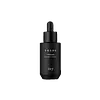What's inside
What's inside
 Key Ingredients
Key Ingredients

 Benefits
Benefits

 Concerns
Concerns

No concerns
 Ingredients Side-by-side
Ingredients Side-by-side

Glycerin
HumectantPropanediol
Solvent3-O-Ethyl Ascorbic Acid 15%
Skin ConditioningLactobacillus Ferment
Skin ConditioningWater
Skin ConditioningButylene Glycol
HumectantArbutin
AntioxidantVinegar
Panax Ginseng Root Extract
EmollientTriticum Aestivum Seed Extract
PerfumingTocopherol
AntioxidantHydrolyzed Ginseng Saponins
Skin ConditioningFructooligosaccharides
HumectantStreptococcus Thermophilus Ferment
HumectantLactococcus Ferment
Skin ConditioningCentella Asiatica Leaf Extract
Skin ConditioningCamellia Sinensis Leaf Extract
AntimicrobialBifida Ferment Lysate
Skin ConditioningXylitol
HumectantRhamnose
HumectantPerilla Frutescens Extract
Skin ConditioningNiacinamide
SmoothingInulin
Skin ConditioningSodium Hyaluronate
HumectantPanthenol
Skin ConditioningSodium Hyaluronate Crosspolymer
HumectantPotassium Hyaluronate
Skin ConditioningHydroxypropyltrimonium Hyaluronate
Hydrolyzed Sodium Hyaluronate
Skin ConditioningHydrolyzed Hyaluronic Acid
HumectantHyaluronic Acid
HumectantThiamine Hcl
MaskingPyridoxine
Skin ConditioningFolic Acid
Skin ConditioningBiotin
AntiseborrhoeicPentylene Glycol
Skin ConditioningSodium Acetylated Hyaluronate
HumectantMenadione
MaskingCyanocobalamin
Skin ConditioningRiboflavin
Cosmetic ColorantInositol
Humectant1,2-Hexanediol
Skin ConditioningPolyglyceryl-5 Oleate
EmulsifyingHydrogenated Lecithin
EmulsifyingPolyglyceryl-10 Stearate
Skin ConditioningVanilla Planifolia Fruit Extract
Skin ConditioningGlycerin, Propanediol, 3-O-Ethyl Ascorbic Acid 15%, Lactobacillus Ferment, Water, Butylene Glycol, Arbutin, Vinegar, Panax Ginseng Root Extract, Triticum Aestivum Seed Extract, Tocopherol, Hydrolyzed Ginseng Saponins, Fructooligosaccharides, Streptococcus Thermophilus Ferment, Lactococcus Ferment, Centella Asiatica Leaf Extract, Camellia Sinensis Leaf Extract, Bifida Ferment Lysate, Xylitol, Rhamnose, Perilla Frutescens Extract, Niacinamide, Inulin, Sodium Hyaluronate, Panthenol, Sodium Hyaluronate Crosspolymer, Potassium Hyaluronate, Hydroxypropyltrimonium Hyaluronate, Hydrolyzed Sodium Hyaluronate, Hydrolyzed Hyaluronic Acid, Hyaluronic Acid, Thiamine Hcl, Pyridoxine, Folic Acid, Biotin, Pentylene Glycol, Sodium Acetylated Hyaluronate, Menadione, Cyanocobalamin, Riboflavin, Inositol, 1,2-Hexanediol, Polyglyceryl-5 Oleate, Hydrogenated Lecithin, Polyglyceryl-10 Stearate, Vanilla Planifolia Fruit Extract
Water
Skin ConditioningSnail Secretion Filtrate
Skin ConditioningDimethyl Isosorbide
SolventButylene Glycol
HumectantPropylene Glycol
Humectant3-O-Ethyl Ascorbic Acid
Skin ConditioningNiacinamide
SmoothingPEG-7 Glyceryl Cocoate
EmulsifyingMaltodextrin
AbsorbentCaprylyl Glycol
EmollientVp/Acrylates/Lauryl Methacrylate Copolymer
Deschampsia Antarctica Leaf Extract
AntioxidantSodium Hyaluronate
HumectantZea Mays Starch
AbsorbentPolyacrylate Crosspolymer-6
Emulsion StabilisingTrisodium Ethylenediamine Disuccinate
Ethylhexylglycerin
Skin ConditioningTocopheryl Acetate
AntioxidantParfum
MaskingPhenoxyethanol
PreservativeWater, Snail Secretion Filtrate, Dimethyl Isosorbide, Butylene Glycol, Propylene Glycol, 3-O-Ethyl Ascorbic Acid, Niacinamide, PEG-7 Glyceryl Cocoate, Maltodextrin, Caprylyl Glycol, Vp/Acrylates/Lauryl Methacrylate Copolymer, Deschampsia Antarctica Leaf Extract, Sodium Hyaluronate, Zea Mays Starch, Polyacrylate Crosspolymer-6, Trisodium Ethylenediamine Disuccinate, Ethylhexylglycerin, Tocopheryl Acetate, Parfum, Phenoxyethanol
Ingredients Explained
These ingredients are found in both products.
Ingredients higher up in an ingredient list are typically present in a larger amount.
You might know this ingredient as Ethyl Ascorbic Acid, a more stable version of ascorbic acid.
Like other types of vitamin C, this ingredient has many benefits including reducing wrinkles, skin soothing, dark spot fading, and fighting against free radicals.
3-O-Ethyl Ascorbic Acid interferes with the process of skin darkening, helping to reduce hyperpigmentation. It also encourages the skin to produce more collagen.
Once applied, 3-O-Ethyl Ascorbic Acid is converted to Vitamin C deeper in the skin's layers. This process is slow but makes this ingredient more tolerable for skin.
The optimum pH range for this ingredient is 4 - 5.5
Learn more about 3-O-Ethyl Ascorbic AcidButylene Glycol (or BG) is used within cosmetic products for a few different reasons:
Overall, Butylene Glycol is a safe and well-rounded ingredient that works well with other ingredients.
Though this ingredient works well with most skin types, some people with sensitive skin may experience a reaction such as allergic rashes, closed comedones, or itchiness.
Learn more about Butylene GlycolNiacinamide is a multitasking form of vitamin B3 that strengthens the skin barrier, reduces pores and dark spots, regulates oil, and improves signs of aging.
And the best part? It's gentle and well-tolerated by most skin types, including sensitive and reactive skin.
You might have heard of "niacin flush", or the reddening of skin that causes itchiness. Niacinamide has not been found to cause this.
In very rare cases, some individuals may not be able to tolerate niacinamide at all or experience an allergic reaction to it.
If you are experiencing flaking, irritation, and dryness with this ingredient, be sure to double check all your products as this ingredient can be found in all categories of skincare.
When incorporating niacinamide into your routine, look out for concentration amounts. Typically, 5% niacinamide provides benefits such as fading dark spots. However, if you have sensitive skin, it is better to begin with a smaller concentration.
When you apply niacinamide to your skin, your body converts it into nicotinamide adenine dinucleotide (NAD). NAD is an essential coenzyme that is already found in your cells as "fuel" and powers countless biological processes.
In your skin, NAD helps repair cell damage, produce new healthy cells, support collagen production, strengthen the skin barrier, and fight environmental stressors (like UV and pollution).
Our natural NAD levels start to decline with age, leading to slower skin repair, visible aging, and a weaker skin barrier. By providing your skin niacinamide, you're recharging your skin's NAD levels. This leads to stronger, healthier, and younger looking skin.
Another name for vitamin B3 is nicotinamide. This vitamin is water-soluble and our bodies don't store it. We obtain Vitamin B3 from either food or skincare. Meat, fish, wheat, yeast, and leafy greens contain vitamin B3.
The type of niacinamide used in skincare is synthetically created.
Learn more about NiacinamideSodium Hyaluronate is hyaluronic acid's salt form. It is commonly derived from the sodium salt of hyaluronic acid.
Like hyaluronic acid, it is great at holding water and acts as a humectant. This makes it a great skin hydrating ingredient.
Sodium Hyaluronate is naturally occurring in our bodies and is mostly found in eye fluid and joints.
These are some other common types of Hyaluronic Acid:
Learn more about Sodium HyaluronateWater. It's the most common cosmetic ingredient of all. You'll usually see it at the top of ingredient lists, meaning that it makes up the largest part of the product.
So why is it so popular? Water most often acts as a solvent - this means that it helps dissolve other ingredients into the formulation.
You'll also recognize water as that liquid we all need to stay alive. If you see this, drink a glass of water. Stay hydrated!
Learn more about Water